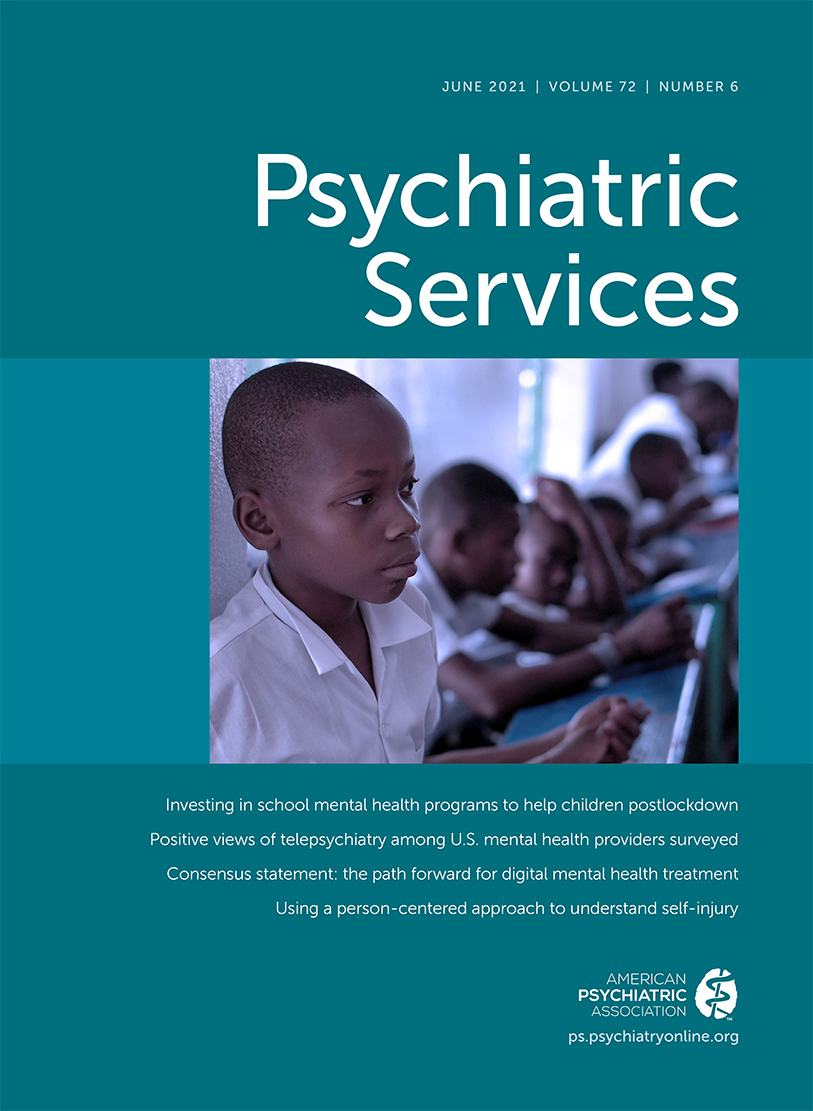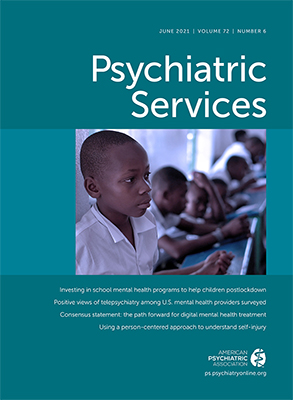During the past 5 years, Virginia has transformed the state’s adult behavioral health care system through a variety of policy mechanisms to shift funding, the workforce, and delivery of care and to enhance access. Virginia’s layered approach may inform other states seeking to strengthen their capacity to fight the substance use epidemic, even as new epidemics emerge.
Virginia’s system expansion began modestly, arguably with the most complex patient group: adults with very low income diagnosed as having serious mental illness. Leading up to this expansion, several factors had begun to underscore the need for a more robust community-based delivery infrastructure. In Virginia, 40 local community services boards (CSBs), which are predominantly county or multicounty agencies, deliver community services to persons with developmental disabilities, serious mental illness, or substance use disorder across all 133 counties. Funding for the CSBs came from state general revenues, which were enhanced with optional local resources, leading to wide state variation in access to care. Local CSBs also could refer patients for care at state-run psychiatric hospitals, creating an incentive to shift costs from local to state levels and from community services to institutional care. In 2014, the total state budget for behavioral health services was $585 million, 52% of which supported state psychiatric facilities, with the remainder supporting community-based services (
1).
Another force for change was mental health needs in the justice system, beginning with crisis services and civil commitment policy. The state behavioral health and criminal justice agencies had collaborated on jail diversion at the local level (e.g., through law enforcement training and drop-off assessment centers as alternatives to arrest) (
2). The share of jail mental health services provided by CSBs fluctuated annually, with significant regional variation, in part because of state budget decisions (
3). Aside from initiatives related to jail diversion and funds for temporary involuntary detention, no state funding was targeted to mental health services in the justice system and CSBs had no statutory obligation to deliver mental health services to the jail population. Thus, jails also faced an incentive to shift care to state facilities, and in 2012, 36% of the 1,300 state psychiatric hospital beds were occupied by adults in the custody of the corrections systems (
4).
Finally, rapidly rising opioid deaths gained greater attention from state officials. In 2014, the governor formed the Task Force on Prescription Drug and Heroin Abuse, which initially focused on prescription opioid monitoring and naloxone distribution policy. CSB services for substance use treatment were modest compared with those for mental health, reaching about one-quarter of CSBs’ outpatient volume. In its second year, the governor’s task force devoted greater attention to evidence-based treatments for substance use, such as medication-assisted treatment, drug treatment courts, peer support services, and the potential for Medicaid coverage of treatment services.
In 2015, after a tragic event involving an elected official’s son who had bipolar disorder and a consensus in the Virginia General Assembly to improve crisis response for emergency psychiatric services, a joint legislative mental health commission and the Governor’s Task Force on Improving Mental Health Services and Crisis Response were formed. Virginia also received a Substance Abuse and Mental Health Services Administration planning grant for certified community behavioral health clinics, focusing attention on the model’s six core service categories, as defined by the Excellence in Mental Health Act, and providing a concrete framework from which to assess CSB factors such as training, care coordination, quality reporting, and service gaps (e.g., around primary care and substance use treatment).
With no broad Medicaid expansion in place, a new Virginia program arose as a political compromise seeking to leverage a modest benefit package of outpatient services through Medicaid and to demonstrate the feasibility of measurable change in care and realignment of funding. Through a federal Medicaid waiver, the new program covered outpatient primary care medical visits, specialty behavioral health care, medication, and laboratory testing for uninsured individuals with serious mental illness who were treated by CSBs. The legislature approved funding to cover eligibility at incomes below 60% of the federal poverty level, below the 100% level approved under the federal Medicaid waiver.
A small program with stringent income eligibility, it served just under 8,000 clients during its first year. However, this program laid the groundwork for data sharing, cross-county coordination, and shared planning across key stakeholders, including county mental health clinics, community health clinics, and health plans. It also led to new enrollment and outreach systems, remote screening procedures using telehealth tools, and outreach to criminal justice stakeholders. Descriptive evaluations (
5) found a positive impact on outcomes, including a decline in involuntary treatment among individuals in the program. By 2017, however, there continued to be wide variation in local mental health treatment funding, with 93% of local funding stemming from areas that served 50% of state residents (
6). In 2017, CSBs were mandated to begin implementing comprehensive certified community behavioral health clinic services with a target implementation date of 2021, but funding was limited.
In 2016, Virginia declared the opioid epidemic a public health emergency and, along with other opioid use prevention initiatives, expanded coverage for substance use treatment under Medicaid. The coverage was comprehensive and based on the treatment and level-of-care framework provided by the American Society of Addiction Medicine. Named Addiction and Recovery Treatment Services, this Medicaid coverage started with federal approval in 2017 and covered community-based addiction and recovery treatment services; office-based services; inpatient detoxification; residential treatment; and new service categories, including care coordination and peer recovery support. The peer recovery support was a new licensure category requiring cooperation across multiple state agencies to establish training, licensure criteria, and reimbursement rules. After hosting in-person training for hundreds of clinicians and addressing a range of administrative issues, from service authorizations to level-of-care determination and claims processing, the program increased addiction treatment services among Medicaid clients by 57% during its first year. Coverage for most Medicaid enrollees was through managed care organizations (MCOs), which meant that a layer of provider credentialing was also needed. Nonetheless, during its first 2 years, the program was associated with reduced emergency department visits and inpatient admissions for substance use disorder (
7). Notably, in the program’s first year, the number of Medicaid residential treatment providers increased from four to 77, total intensive outpatient programs grew from 49 to 72, and total Medicaid inpatient detoxification treatment programs rose from zero to 103 statewide. The number of clients receiving substance use treatment services at CSBs declined (
8,
9), but participation among private outpatient providers nearly doubled, with a fivefold increase in physician participation and a sixfold increase among nurse practitioners during the first year (
10).
As multiple threads were coming together with a common goal of expanded community-based treatment and greater provider participation, Virginia became the 33rd state to expand Medicaid. In 2019, Medicaid coverage in Virginia rose from 1 million to 1.4 million low-income residents, primarily nonelderly adults. With expanded benefits and administrative infrastructure already in place, the state had a platform from which to address the increased demand resulting from Medicaid expansion.
In Virginia, the emphasis on fostering outpatient, office-based treatment has been particularly noteworthy. The state has emphasized recruiting and supporting providers who can deliver medication-assisted therapy, particularly those working with multidisciplinary teams. Under special state Medicaid designations, these preferred office-based opioid treatment (OBOT) providers have a buprenorphine-waivered clinician who is authorized to prescribe buprenorphine and who is colocated with a behavioral health clinician to provide patients with medication, counseling, and integrated medical care. Preferred OBOTs must be credentialed by Medicaid MCOs but are not subject to prior authorization for buprenorphine products. The OBOT practices receive an enhanced payment for opioid counseling, a monthly care coordination fee ($243), and reimbursement for peer recovery support services. Early on, the state promoted OBOT by hosting a web-based system to share clinic hours, provider availability, and buprenorphine waiver and other specialty information. These data were shared with MCOs and their care coordinators. Notably, from 2018 to 2019, the number of preferred OBOTs grew from 78 to 130 (
11), and much of the increase was among private providers.
Finally, the state behavioral health system was shaped by workforce policy changes. In particular, as the state expanded nursing scope-of-practice provisions and introduced autonomous practice by nurse practitioners, the number of licensed nurse practitioners in the state grew by 52% in 5 years. Nurse practitioners now make up 25% of buprenorphine-waived providers and are more likely than physicians to be actively prescribing the treatment. Under federal buprenorphine waiver rules, autonomous nurse practitioners receive longer training than do physicians, but no additional state training is required. In addition, the state began to register qualified medical health professionals and peer recovery specialists; within 2 years, their numbers grew to 20,000. Finally, the state legislature funded more than 60 new residency training slots, with preference for rural sites and primary care.
In a short time, the state, which was among the 10 lowest in buprenorphine-waivered providers per capita (
12), has increased its waivered provider rate faster than the national average. Moreover, since 2015, the number of licensed mental health professionals per capita has grown by 35% statewide, and growth in rural counties was 30% (
13). This rate was faster than the national average of 22% for rural counties.
Virginia is now tackling some of the most difficult population and system coordination challenges in behavioral health care. First, the state now requires Medicaid MCOs to gather information on the social determinants of health (SDOH) for Medicaid adult expansion members and to begin incorporating specific approaches to address SDOH deficits in their contracts with the state. These efforts will need to be evaluated for their success in improving SDOH and health equity. Second, with federal planning support, the Medicaid agency is developing new policies for pregnant women with substance use disorders, a population in which large racial gaps in access have been noted, and for individuals released from the criminal justice system. The collective impact of these recent, dramatic policy changes to procedures, outreach, eligibility, coverage, the workforce, and payment has laid the foundation for the transformation of behavioral health care.

